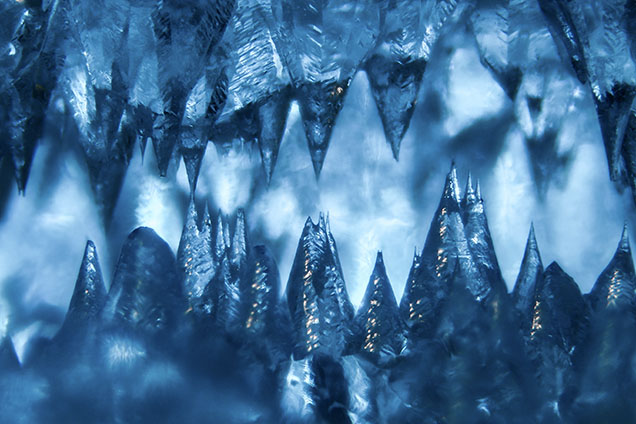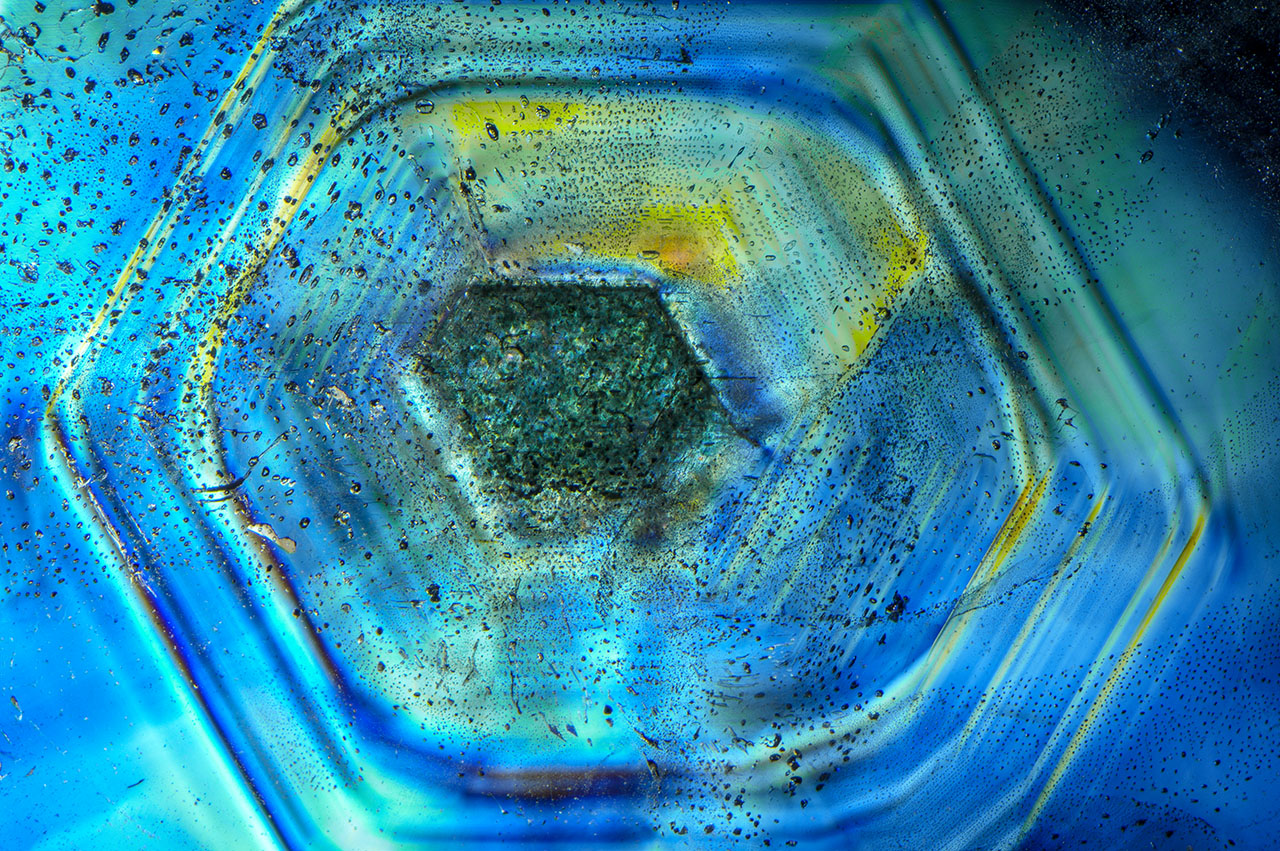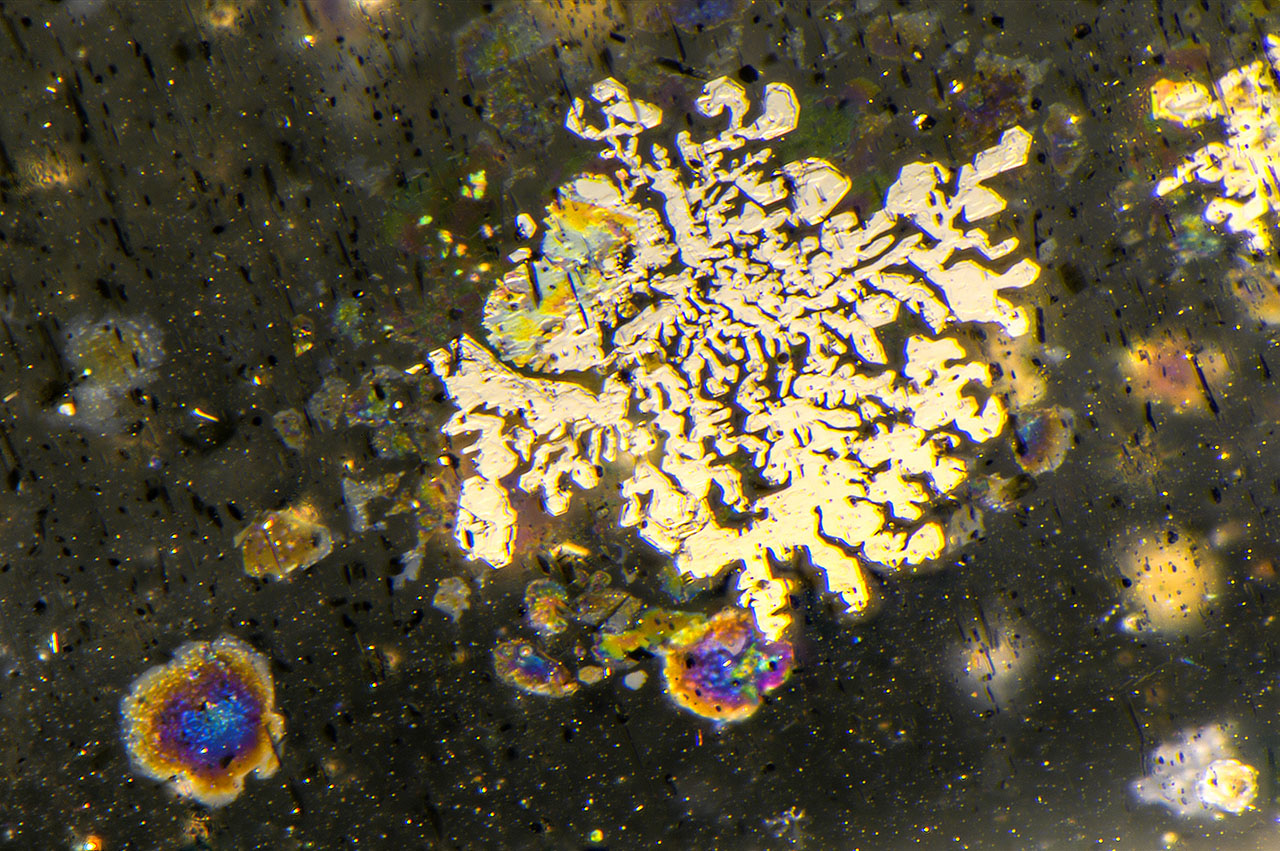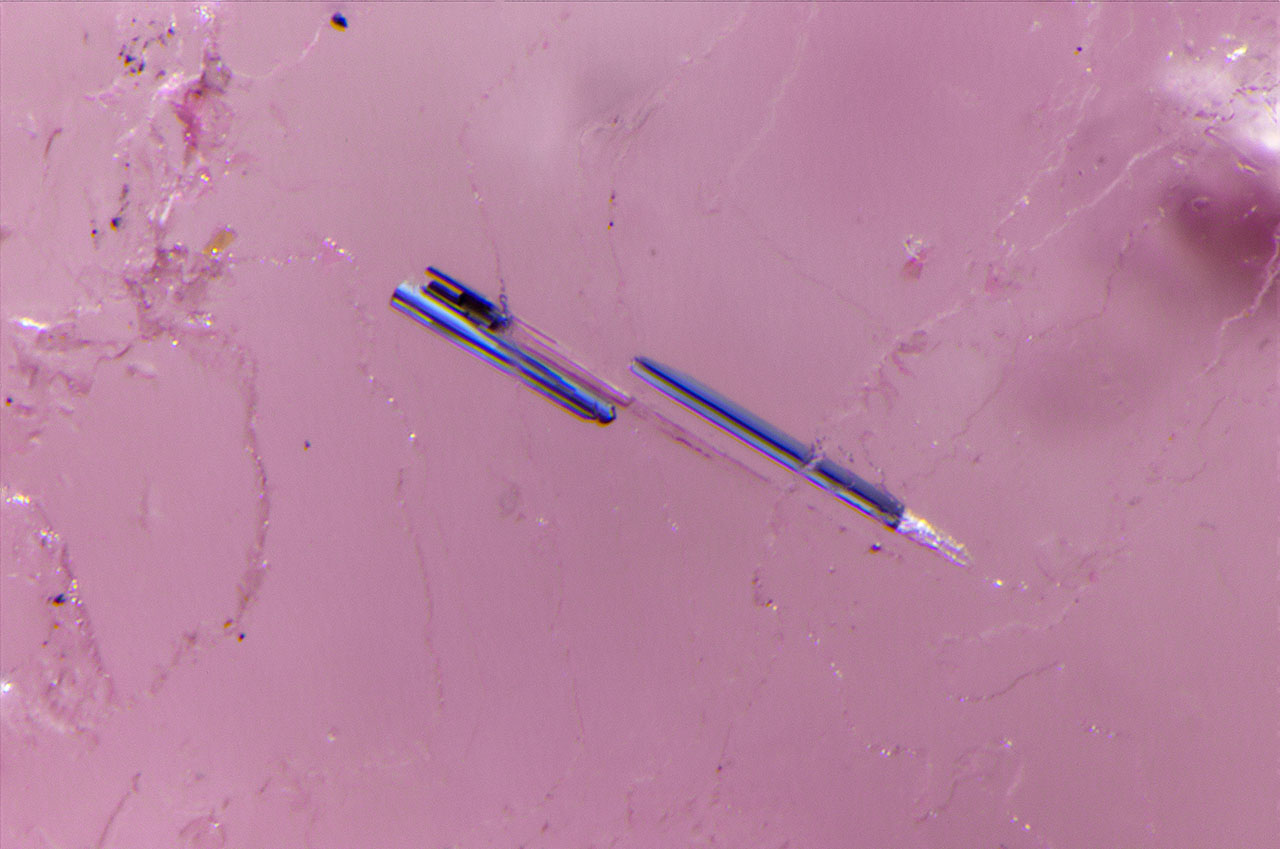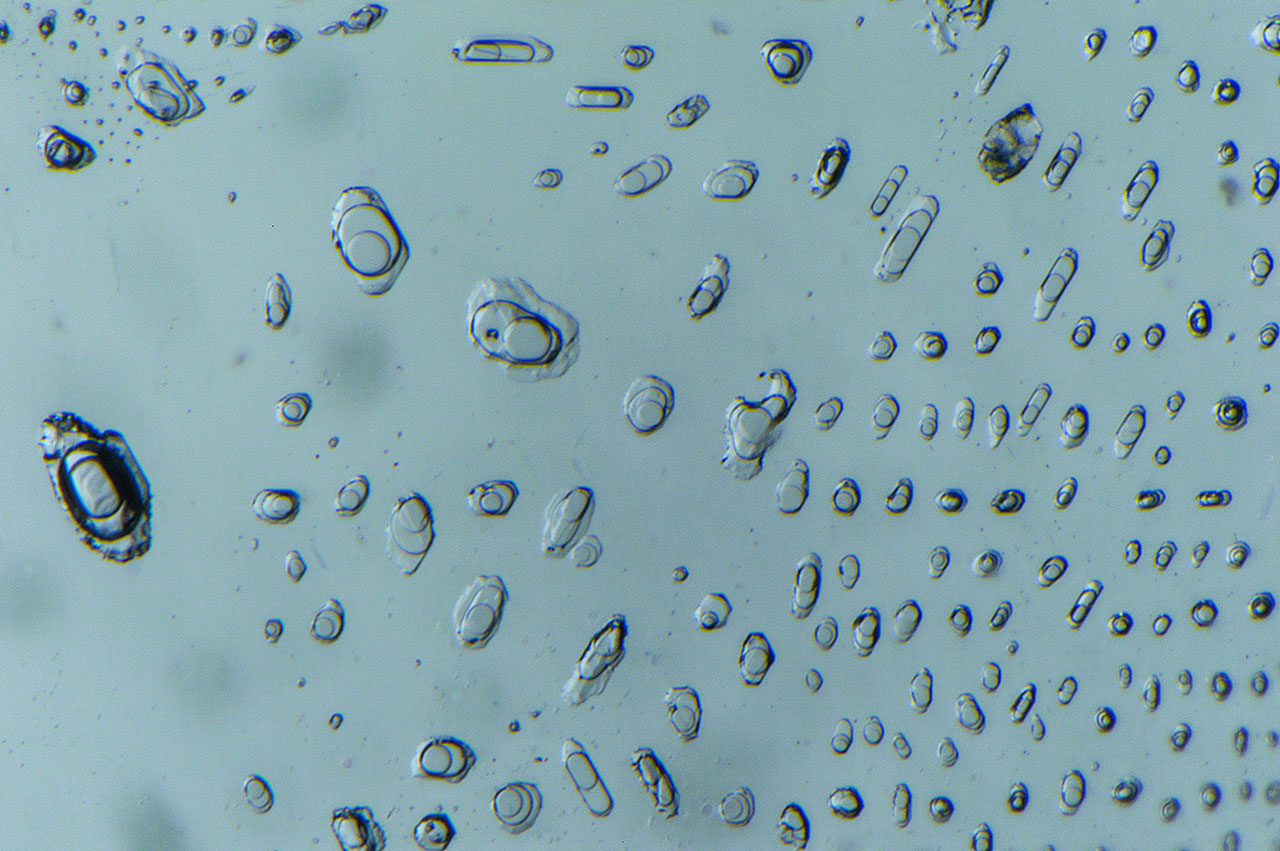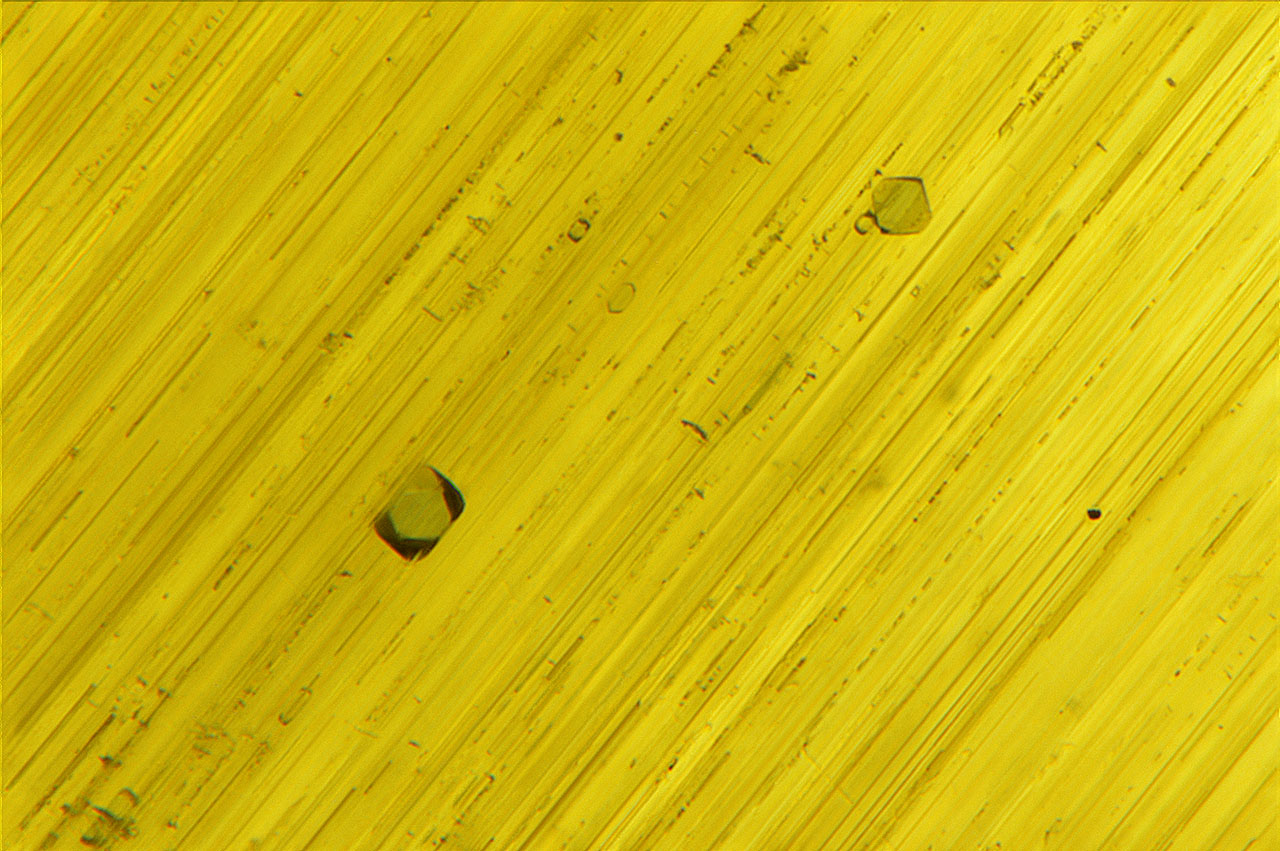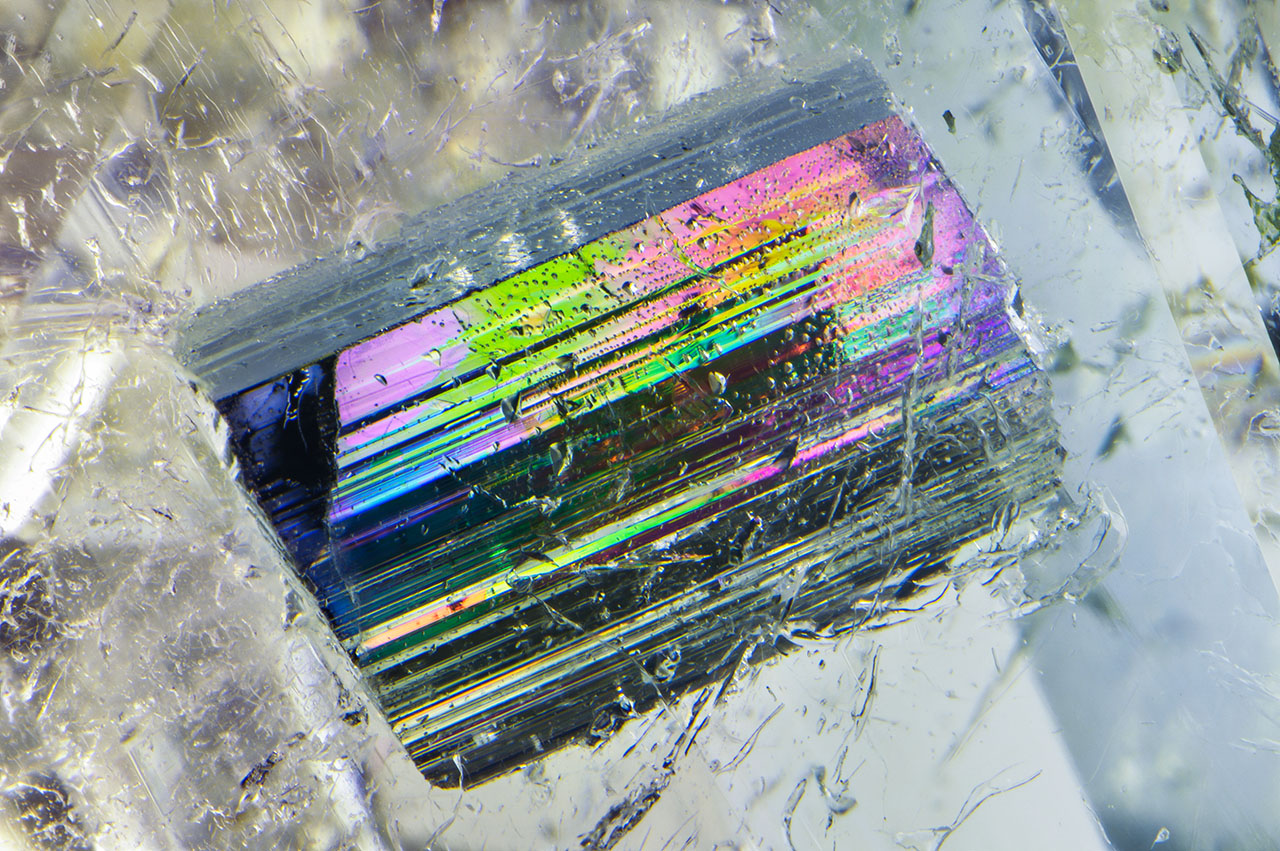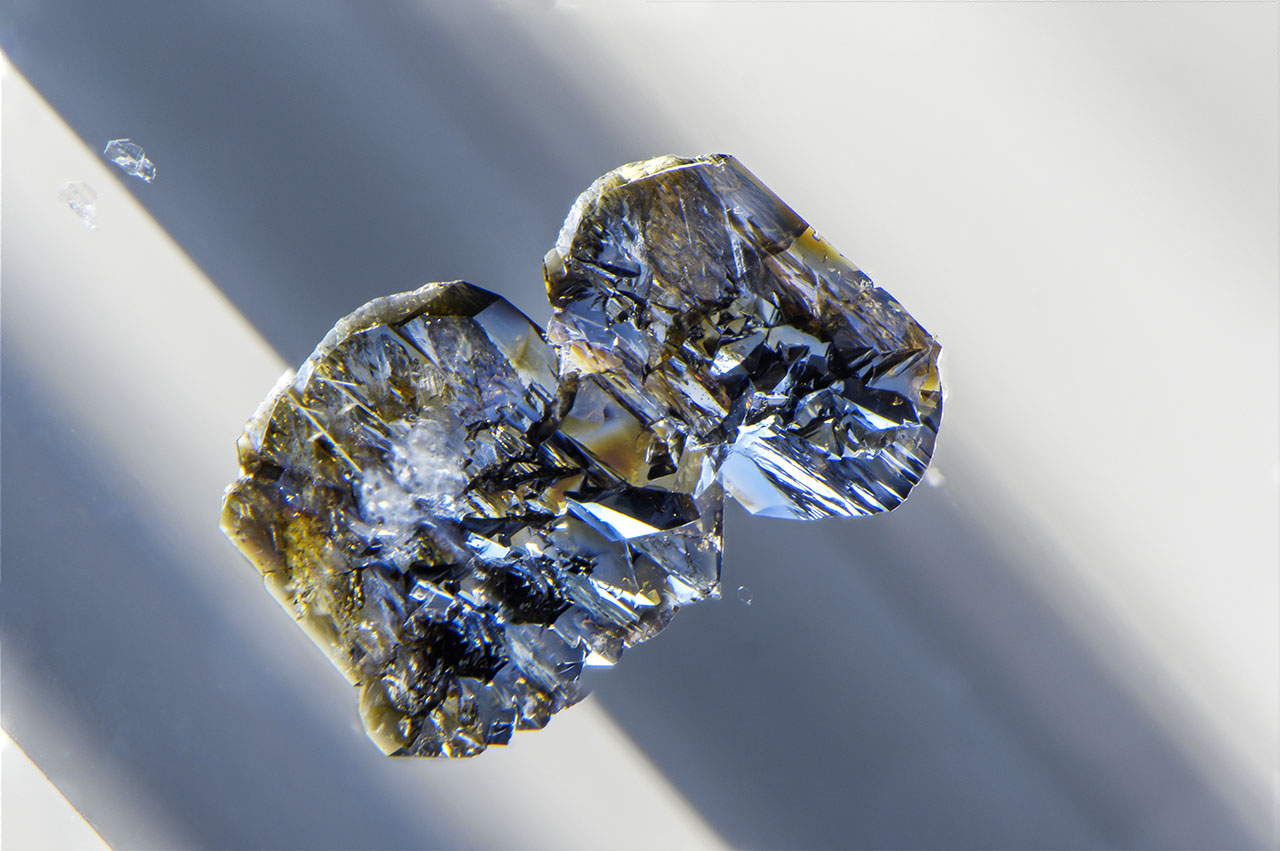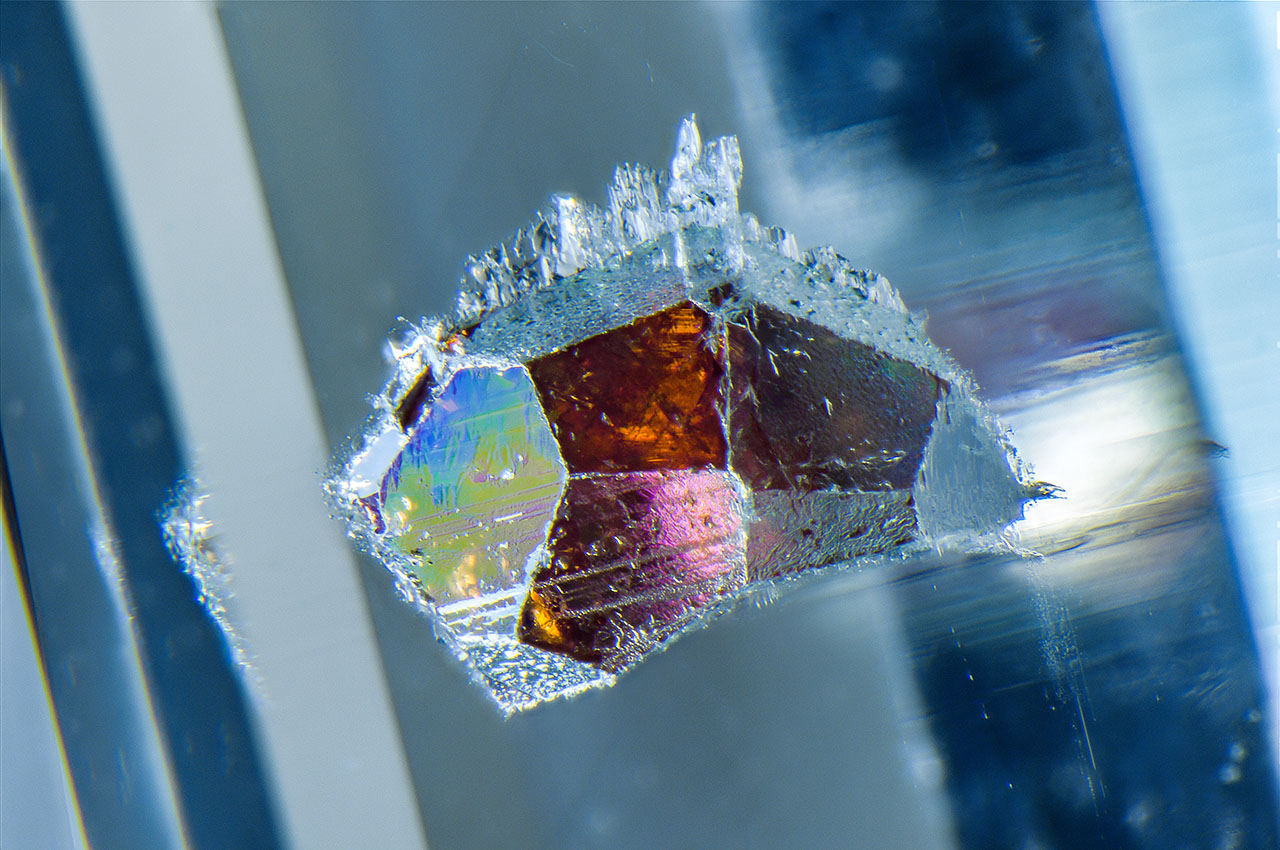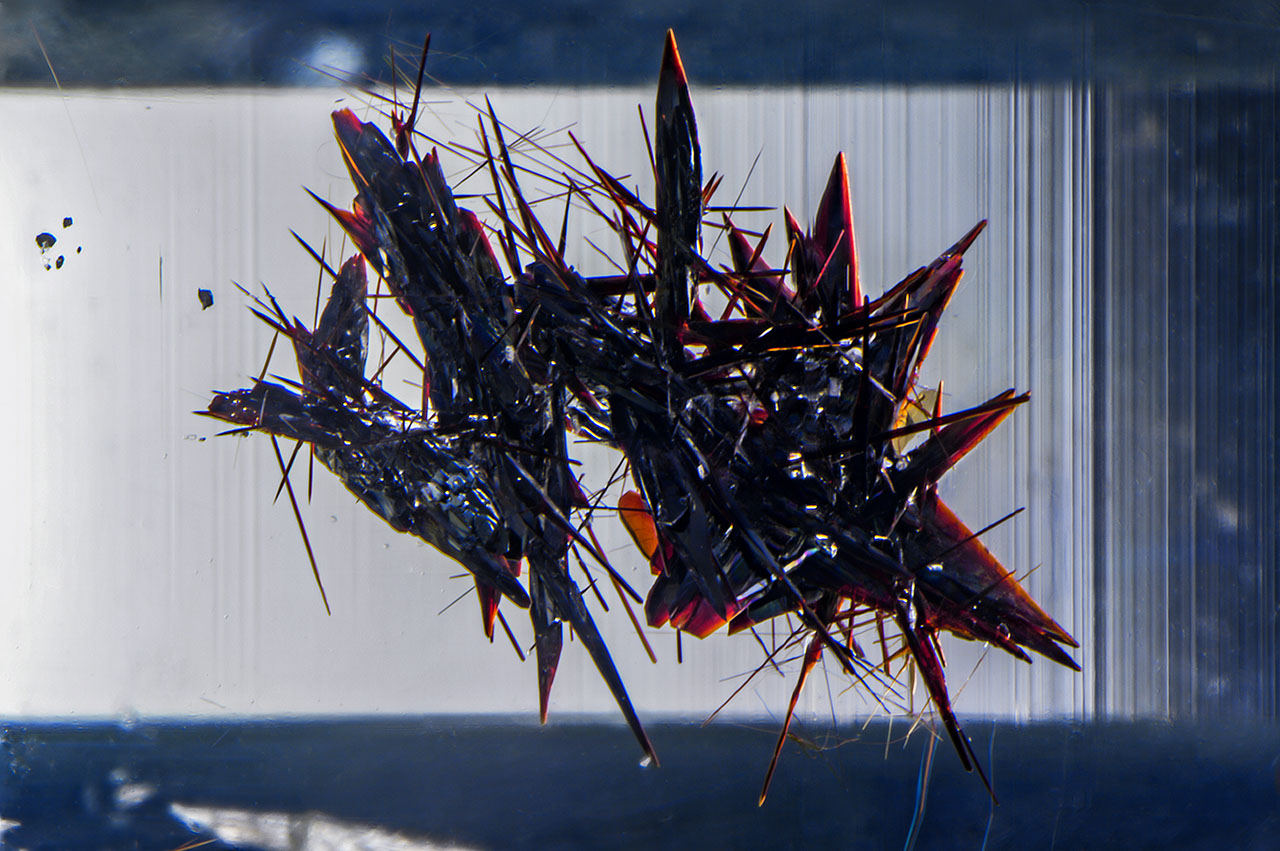Micro-Features of Beryl
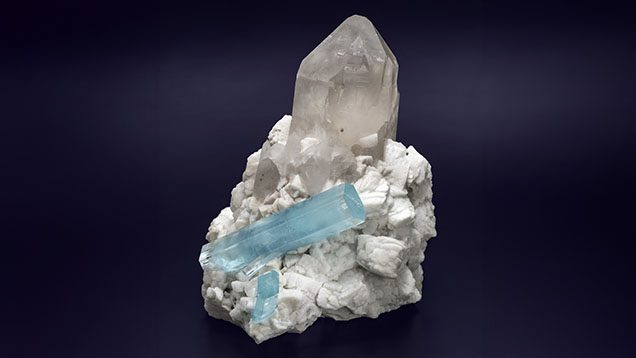
The beryl group of beryllium silicate minerals currently contains six member species, all of which have a hexagonal crystal structure: beryl, pezzottaite, bazzite, avdeevite, stoppaniite, and the most recent member, johnkoivulaite, which was named as a new mineral in 2019 (Palke et al., 2019) after GIA’s analytical microscopist, John Koivula. As faceted gems, beryl and pezzottaite are the most commonly encountered species. Beryl is the most common beryllium-containing mineral (London, 2008) and often forms in pegmatitic environments or as a product of metasomatism. Also possible is a unique set of conditions in which beryl can crystallize from magma-derived gases and groundwater, as in the case of the red beryl deposit in the state of Utah (Shigley et al., 2003). Beryl gems include blue aquamarine (see above), golden beryl, red beryl, pink morganite, colorless goshenite, as well as Maxixe beryl, which is commonly dark blue with an unstable color. Emerald is the green variety of beryl colored by chromium and/or vanadium. Pezzottaite was first discovered in a granitic pegmatite in Madagascar in 2002 (Laurs et al., 2003). This unique bright pink beryl mineral has high cesium and lithium contents, which differentiate it as a unique beryl-group mineral.
Many of the beryl examples in the accompanying wall chart crystallized from a pegmatitic environment in which there is a high enough beryllium concentration for these gems to crystallize, which require the element as it is a bulk part of the crystal structure. These pegmatitic environments often contain fluids that get trapped along with other pegmatitic minerals, leaving a signature of their geologic formation within the gem’s interior. The minerals most likely to be observed in these pegmatitic gems include albite, apatite, muscovite, garnet, tourmaline, and quartz (Gübelin and Koivula, 1986), while rare minerals such as stibiotantalite and monazite are only occasionally encountered.
This chart will focus on the members of the beryl group commonly seen as gems but will exclude emerald, which already has its own inclusions chart. While synthetic and treated beryl gems do exist, they are relatively uncommon, so this chart only deals with natural beryl. These include fluids and solid minerals, as well as surface features and structural inclusions. As with past charts, the images presented are not meant to be all-encompassing but offer a wide range of the possible types of inclusions found in beryl gems.
For more on beryl inclusions, please see the Additional Reading list.
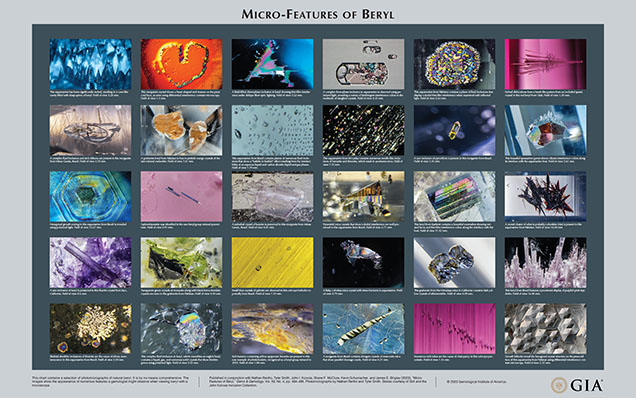
Published in conjunction with Nathan Renfro, Tyler Smith, John I. Koivula, Shane F. McClure, Kevin Schumacher, and James E. Shigley (2023), “Micro-Features of Beryl,” Gems & Gemology, Vol. 59, No. 4, pp. 484–485. Photomicrographs by Nathan Renfro and Tyler Smith. Stones courtesy of GIA and the John Koivula Inclusion Collection.
